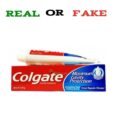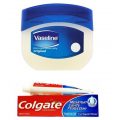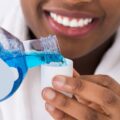Most times we buy toothpaste without any reference to its composition and the implication of what it contains. All toothpaste with the exception of traditional or local preparations for oral health comes with a label and color strip indicating the constituents used in manufacturing the product. Oral hygiene as an important component of health plays a vital role in the overall well-being of an individual.
A good oral hygiene practice is not just about riding the buccal cavity of debris and decayed matter, it also involves the type of toothbrush, the technique adopted, and most importantly the class of toothpaste you choose to employ.
Things to consider before buying your toothpaste
- Family history of sensitivity to certain ingredients contained in toothpaste
- Sensitivity of tooth
- Oral hygiene objective ( Tatar control, Antimicrobial, or Whitening )
- Age of the user ( Certain toothpaste are age restricted)
How to know the composition of toothpaste from a strip
The label provides the most important information about the content of your toothpaste. According to an existing theory that has not been disproven, each toothpaste comes with a color strip at the bottom of the tube or pack indicating the leaning of its constituents. This mark provides an instant clue as to what the toothpaste contains. Beyond the flashy adverts and glittering smiles on commercials, you need to look out for those details especially the ones on the labels.
Theory of Toothpaste color codes
- Green = Completely Natural Toothpaste
- Blue = Natural In Combination With Medicines
- Red = Natural + Chemicals
- Black = Pure Chemicals
Major constituents of toothpaste
Toothpaste contains several components. In this article, we have provided the main constituents in toothpaste to enable you to make the right choice when next you go out shopping for this very essential item.
Toothpaste Color Codes & What they Mean
[youtube_channel resource=0 cache=0 fetch=10 num=1 ratio=3 responsive=1 width=306 display=thumbnail norel=1 nobrand=1 showtitle=none desclen=0 noanno=1 noinfo=1 link_to=none goto_txt=”https://www.youtube.com/watch?v=vLHtvd-pbDI”]
- Abrasives
This makes up at least 50% of a typical toothpaste. They are responsible for removing food debris and stains from the teeth. Abrasives were originally made from crushed egg or oyster shells.
- Fluorides
This component was added to toothpaste just 50 years ago, they help to prevent cavities by re-mineralizing teeth
- Detergents
When most people hear the word detergent, their minds go straight to dry cleaning. Just like clothing, our teeth also require detergents. Detergents give the toothpaste its foamy and bubbly characteristic. The main detergent in toothpaste is known as sodium lauryl sulfate otherwise known as (SLS.)
- Sweeteners
Toothpaste is generally sweet because they contain either saccharin, aspartame, or xylitol which were added to provide a pleasurable or sweet taste while brushing.SEE: How To Get Rid Of Black Gums





